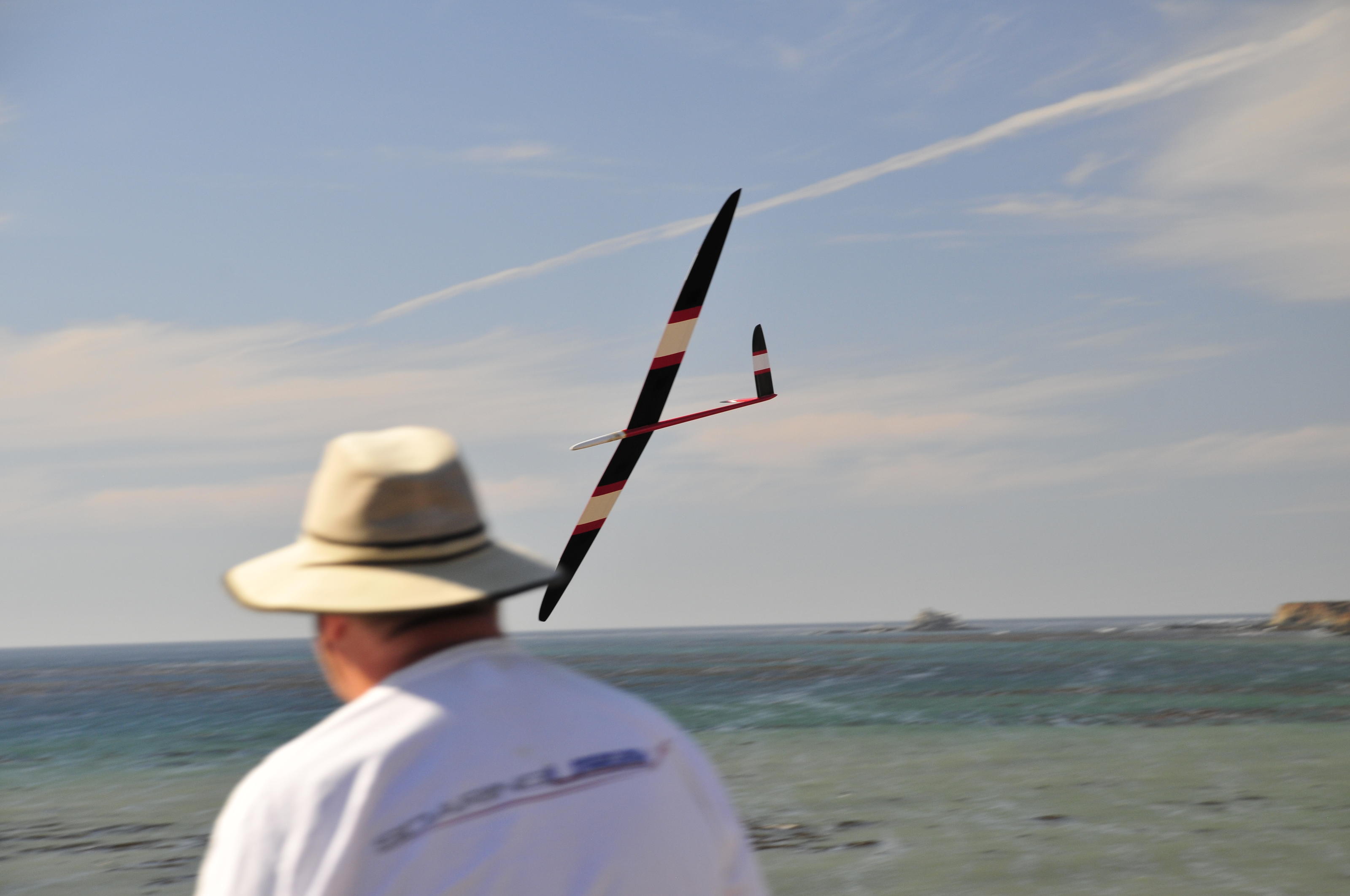

If you are into speed, and precision flying, F3F Slope racing, may be your favorite RC Sailplane hobby!
Anyone, with any type of glider is welcome to try and fly and compete at a F3F competition. You just have to be able to at least fly 10 lapse back and forth on the slope of the course and land. Sounds easy? But to be competitive it will take a lot of time and practice, a proper F3F-F3B style 3m composite plane, a proper flying setup, ballast, and again a lot of practice will help. I started with a wing, an M60 and slowly graduated to more competitive models. Flying the course is fun and you learn alot about flying. Each person flys the course by themselves, it is a timed event and each person's time on the course is recorded and scored against the person with the fastest run for that round. The course is 100m long with 10 laps. Basically its a 1000m or 1K with 9 turns. In this regard, it is similar to the speed event in F3B. Times on the course range from 80 seconds or more at the slowest, down to 30 seconds for all 10 laps. The world record is 24.xx seconds!
Scoring; the person who flies the fastest run gets a 1000 pts. Every run below that time is scored to the fastest run for that round. When you look at 10 to 15 rounds per race, 10 races a year at a 1000 pts per round, and the scores at the end of the year are sometimes 500 to less than 100 pts total between competitors, that is some very seriously close racing!!
Running the course goes basically like this.
Your up next waiting for the person in front of you to finish his run. Soon as he is off the course and heading to land, the CD starts the clock, and you have 30 seconds to launch. This time the pilot usually reviews the conditions and decides the best course of action, of course this is also an on going review while watching each person before you step up to fly the course. Once you launch the clock starts another 30 seconds, in which you now have to build as much altitude and speed as possible, get off course and dive onto the start on, or before the 30 second timer reaches zero. The best start is when you dive onto the course, from the highest level you can reach in the 30 seconds and come across the start with only 1-2"seconds left on the 30 second start time. As you pass the start, the time for your run is started and your on the clock. Flying the course with the proper start and turn style is the key to the fastest times. Note also if you cut a turn, you must return and get past the line of the course before continuing. Also flying to far past the turn is waisted time. This is the precision part of running the course. Styles of start and turns differs for each site we fly at. Each place you fly is different. Same with the wind, it also can change in speed and direction, effecting the way you setup your ballast and your start, and turn techniques. Those that adjust to the conditions the quickest, usually are the best pilots, and the top contenders of the contest. In light conditions working the best area of the slope or cliff with the most lift, can be challenging, and very up close flying. As the wind speed raises, we add ballast to compensate. Conversely as the wind and lift picks up and adding ballast, so does the speed of our planes. Being clocked by a police radar gun, when flying in 30- 40 mph wind at Pt Fermin in CA, dive in speed can be as high as 120mph!! When coming across in front of you at a distance of 10- 20ft, while standing on the edge of a cliff, your plane doing 120, is quite exciting!!! Likewise flying at an inland Slope such as Grass Mountain, the lift may change from moment to moment, with basic wind Slope lift to big thermal activity that could give your plane a big boost in speed. This change can mean the difference of hauling a$$, or dragging your tail trying to stay airborne for the 10 laps! We call this "The thermal lottery". As you can see this can be just as challenging as deciding how to start an F5J in varying conditions. Flying a clean course is the goal, making each run using the lift to its best, makes a winner!

The club I flew with was So Cal Slope Racing in Southern California. They are a great group of guys similar to RMSA, in that they are very welcoming, there is a lot of talent and they love to share their knowledge and help teach this very addictive hobby. If you ever get a chance to try it, give it a go, you won't be disappointed. BTW, knowledge of thermal flying really helps, especially when the lift is low, and you need to get the most out of the conditions!
If you have any questions about F3F, come chat with me. I have a lot of stories over 20yrs of racing, and can fill in the details of how it is done. I'm a bit of a speed addict, and F3F filled that need for speed!
Here are some videos of practice racing...
Video 1
Video 2
Bob Meitzner